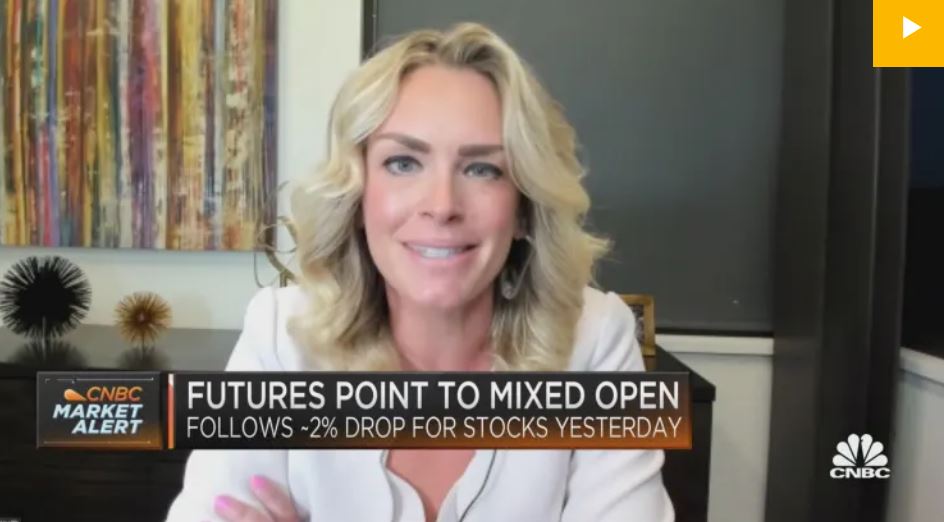A bumpy start to 2022! Hot inflation rates, interest rate hikes by the Federal Reserve, supply chain disruptions, and the war in Ukraine all led to a very volatile start to the year. We expect volatility to continue until these risks subside. High-quality investing and regular portfolio rebalancing remains the recipe for success in this type of market.
In our market outlook commentary for 2022, we outlined a few key risks at the forefront of our minds, including concerns regarding Covid-19, inflation, and interest rate hikes. We also mentioned the possibility of an unforeseen and unanticipated global macro event. Fortunately, it seems Covid-19 may be behind us, at least in the United States. Unfortunately, it appears the remainder of our key risks have come to fruition, including a war in Ukraine.
In this market commentary, we will discuss each of these risks for 2022 and provide our view on the potential impact on the market.
Inflation, as generally defined by the Consumer Price Index (CPI), remains at a 40-year high, hitting 8.5% in March[1]. Some economists predict that inflation peaked in March, but that is far from certain. We carefully monitor not only CPI, but also the Producer Price Index (PPI), which measures the average change over time in the selling prices received by domestic producers for their output.
On the other hand, the Federal Reserve has fared better on their goal of maximum employment. The unemployment rate (seasonally adjusted) for March 2022 was 3.6%, a level not seen since the onset of the pandemic[2]. Earlier this month, the United States Department of Labor reported initial jobless claims at 167,000, almost touching the lowest level since 1968[3]. Both metrics underscore a very tight labor market and near maximum employment. The Fed is now acutely focused on stabilizing prices.
The Fed acts to stabilize prices by adjusting the Fed Funds Rate target range, as this influences the cost of money and supply of money in circulation. When the target for the Fed Funds Rate goes up, many other commercial lending rates go up too. This encourages people to spend less because the cost of borrowing has increased, which in turn, reduces the supply of money in circulation.
In March, the Federal Open Market Committee (FOMC) announced a 25 basis-point (0.25%) increase in the Fed Funds Target range, bringing the range to 0.25% to 0.50%[4]; the first hike since 2018. Consensus expectations of FOMC members are for approximately 1.75% in rate increases in 20224.
Also top of mind for our team, Covid-19 cases have thankfully receded in the U.S., however, the same cannot be said for China. Shanghai’s zero-tolerance lockdown approach to Covid-19 continues to cause severe disruptions to logistics services, adding further pressure to an already battered global supply chain and rising costs of goods globally. The prospect of more Chinese lockdowns, particularly in Beijing, could pose a challenge for the Federal Reserve, as supply chain disruptions continue.
Unfortunately, there does not appear to be an end in sight for the war in Ukraine. The conflict will continue to negatively impact commodity and energy prices. Russia is the world’s largest exporter of oil to global markets[5], the world’s second-largest exporter of natural gas in a gaseous state, and the world’s fifth-largest exporter of natural gas in a liquefied state[6]. Ukraine is the world’s largest exporter of sunflower seed, fourth-largest exporter of corn, and sixth-largest exporter of wheat[7]. Sanctions on Russia will continue to disrupt global energy supply and result in increased prices.
Despite the doom and gloom from inflation woes, interest rate hikes, and the war in Ukraine, corporate earnings provide invaluable insight into the health of the consumer and the economy. For example, in their recent earnings reports, many of the large U.S. banks stated that consumer spending and account balances are rising, which signals a strong consumer and healthy economy.
As of April 22, 20% of the S&P500 companies reported earnings. Seventy-nine percent of the companies reported a positive earnings-per-share (EPS) surprise, which is above the 5-year average of 77%, and 69% reported a positive revenue surprise, which is in line with the 5-year average[8]. Big Tech (i.e., Apple, Alphabet, Microsoft, Meta Platforms) and payment processing companies (i.e., Visa, Mastercard, PayPal) report earnings this week, which will be another very telling signal on the strength of the economy.
In summary, we face a mixed bag of data points, risks, and outlooks on the economy and the stock market. The consumer and economy appear to be healthy, at least for now, and earnings reports are still surprising to the upside. Significant risks and uncertainties around inflation, interest rates, and monetary tightening remain.
Given these risks and uncertainties, we expect fixed income to continue to struggle, value-oriented equities to continue to outperform growth equities this year, and pockets of volatility to remain. With that said, the risks outlined above are very fluid and the outlook can change with each economic report and FOMC meeting.
While market volatility is no doubt concerning, it is a normal part of investing. We continue to believe that our discipline around diversification, periodic rebalancing, and investing in high quality businesses with healthy balance sheets, is the recipe for success in a volatile and uncertain market.
If you have any questions or would like to discuss your portfolio, please contact our office.
– Evans May Wealth
[1] U.S. Bureau of Labor Statistics, April 12, 2022
[2] U.S. Bureau of Labor Statistics, April 1, 2022
[3] U.S. Department of Labor, April 17, 2020
[4] Board of Governors of the Federal Reserve System, March 16, 2022
[5] International Energy Agency, February 2022
[6] Observatory of Economic Complexity, as of December 31, 2020
[7] American Farm Bureau Federation, March 16, 2022
[8] FactSet Earning Insight, April 22, 2022





